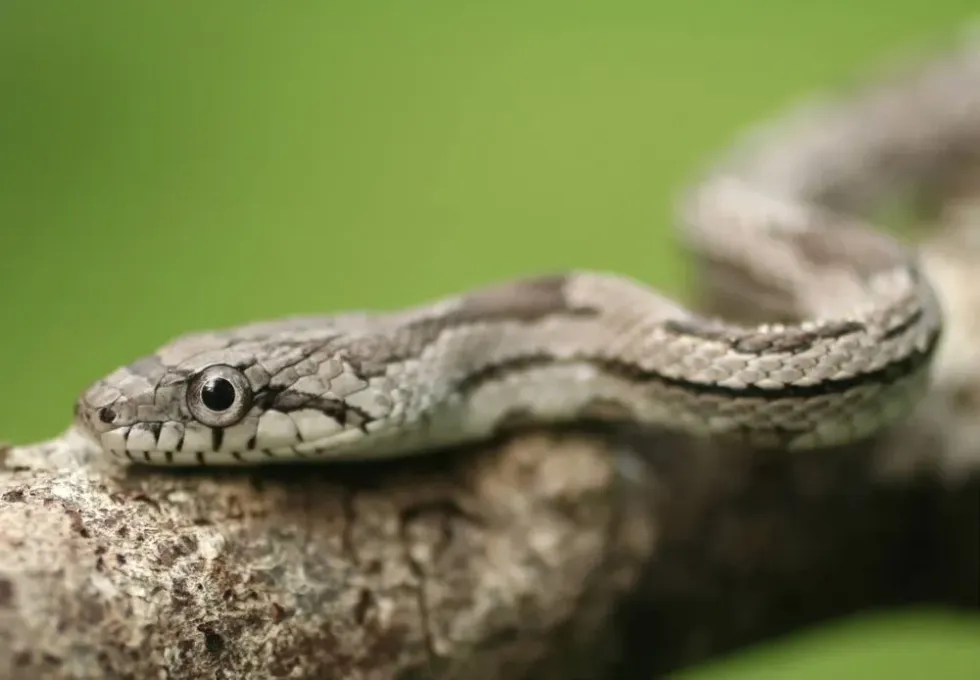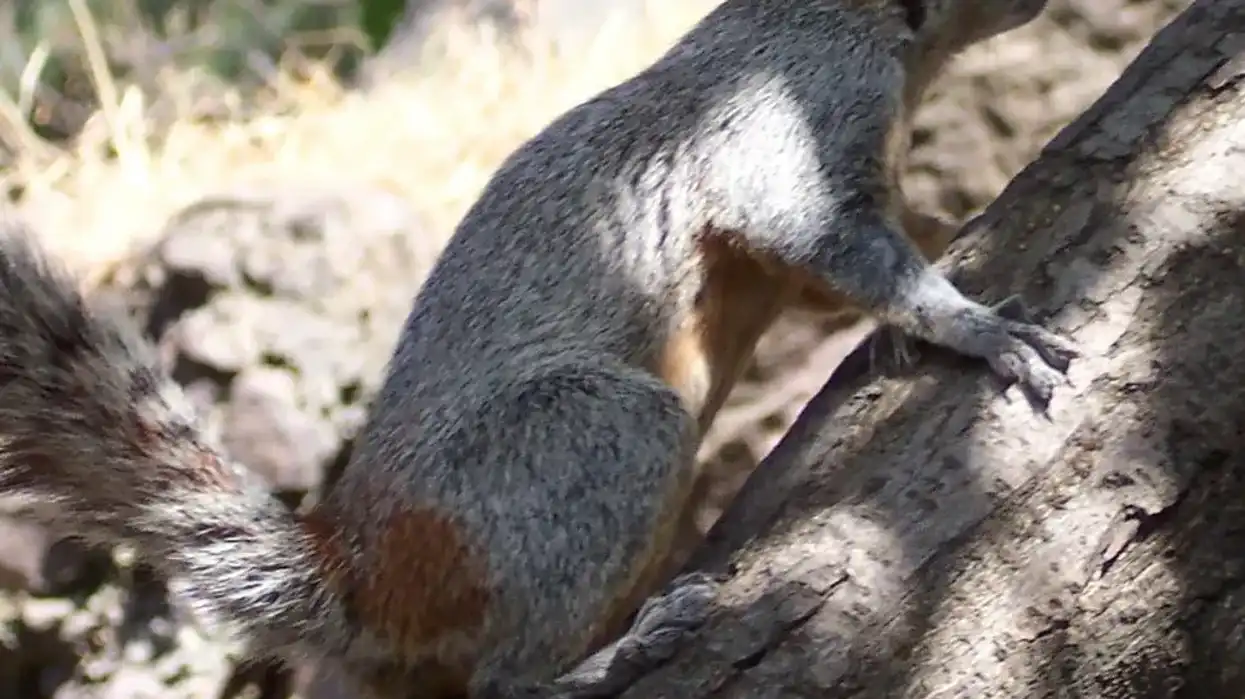There is around a total of 45-55 species of the rat snake genus Elaphe.
Rat snake species are divided into two groups broadly one is the Old World species which are from Europe and then the New World species who are from eastern, and central North America and and the gray rat snake is one among them and if part of the new world species category.
These rat snakes are seen in forests and grassy areas sometimes even near agricultural fields where pests like mice and rats exist.
They climb trees in order to search for prey and are nocturnal in nature with excellent eyesight to search for prey at night.
A few varieties of the same family include the black snake, eastern rat snake, Baird's rat snake, Trans Pecos rat snake, Japanese rat snake, rhinoceros rat snake, mandarin rat snake, white oak gray rat snake, yellow rat snake (Elaphe obsoleta quadrivittata) among others. Gray rat snake ranks number six as the best 20 pet species ranked by popularity.
If you liked this article then please visit worm snake and black rat snake.
Gray Rat Snake Interesting Facts
What type of animal is a gray rat snake?
The gray rat snake is a type of snake species of animal and is about 8 feet long in length.
What class of animal does a gray rat snake belong to?
The gray rat snake is a reptile, belonging to the Colubridae family of species, and is known by its scientific name Pantherophis spiloides.
How many gray rat snakes are there in the world?
The exact number of Carpet Pythons in the world is not known and it is categorized under the Least Concern category. There exist a total of 45-55 species of the rat snake genus Elaphe and although they belong to the same family they are unique in their own ways and different in temperament and behavior.
Where does a gray rat snake live?
The Frontenac axis population requires a variety of habitat types including deciduous forests, lakes, wetlands, rocky outcrops among others. These species are native to North America and exist in other parts of the world as well like central America and Southern Canada.
What is a gray rat snake's habitat?
They are found in the central United States including Indiana, Florida, and Mississippi. They are also found in southern Ontario. Gray rat snake spends the most time in grassy areas and forests when it's warm. In these warm conditions, they are seen in pinelands, marshlands, farmlands, residential areas, and sandy soils.
Who do gray rat snakes live with?
Gray snakes live on their own as well as with other species of their own and as pets with certain people who have had prior experience owning a snake. Rat snakes need to be fed regularly as a pet and in the wild, they usually suffocate their prey to kill before they consume it.
How long does a gray rat snake live?
The average lifespan of a gray rat snake in their natural environment is 15-20 years however if they are kept as pets this depends on various other factors like their diet and environment.
How do they reproduce?
The breeding period begins in spring. Males fight others in the search of female rat snakes to mate with. These snakes are oviparous. Female gray ratsnake lay eggs in rotting vegetation or in hollow logs in summer to protect the offspring from possible predators.
The average clutch size of rat snakes is 5-27 eggs in the fall season. Females lay eggs once every two or three years. This process may occur multiple times in the same year as well.
What is their conservation status?
The gray rat snake IUCN the Least Concern species by the International Union For Conservation Of Nature (IUCN).
Gray Rat Snake Fun Facts
What do gray rat snakes look like?
The gray ratsnake is a large, thick-bodied snake. It is primarily dark in color but it also has brown and gray blotches. Rat snakes have weakly keeled snakes and the anal plate is divided.
They have a faint hint of white between some of the scales. Just like other snakes they shed scales as they grow. Rat snake habits vary among species and temperate zones as well hence one needs a keen eye to spot them.
Dark bands run across from each eye to the corners of the jaw. The underside of a gray rat snake is usually lighter than the rest of its body. Juveniles look similar to adults.
How cute are they?
The gray rat snake juvenile is cute to look at. However, once they grow they look unique in their own way and are not necessarily cute. Looking at them might make you think that the gray rat snake is poisonous, however they are not poisonous in nature and only harm or attack when their territory is invaded.
How do they communicate?
They primarily communicate using pheromones. They also make use of hissing sounds and other body languages to communicate to other species of their own kind.
They are very useful around farms and barn since they keep mice and rats away and hence are adopted by farmers as pets and even by snake lovers. These snakes are always welcome on farms and considered natural pest control.
How big is a gray rat snake?
The gray rat snake is 91.4cm-182.8cm (36inch-72inch) which is 50 times bigger than the smallest snake in the world, the Barbados thread snake which is 10 cm in size.
How fast can a gray rat snake move?
They move at moderate speeds given that they usually have a long body they get to travel at a good distance in a short amount of time. They usually kill their prey by suffocation and bite only when necessary. When they attack prey they are extremely sharp and quick and never miss an opportunity.
How much does a gray rat snake weigh?
The exact weight is not evaluated however their diameter is approximately 1.5 inches which is 3.8 cm. Their size increases as they grow and have strong muscles capable of destroying their prey easily.
What are their male and female names of the species?
Males and females are not addressed differently however there are certain physical differences, such as males who usually outlive females by a few years. Apart from this, there are differences in behavioral patterns as well. Males usually fight others in order to find a suitable mate.
What would you call a baby gray rat snake?
Juveniles or the gray rat snake baby is strongly patterned with brown or gray blotches and are often found in suburban regions or underground in summer.
Baby rat snakes look like a smaller version of their parents and are addressed as a hatchling until they are in their eggshell post that they are referred to as a rat snake baby.
What do they eat?
Their diet consists of mice, small mammals, rodents, birds, and bird eggs. Juveniles eat small frogs, lizards, and small rodents. Juveniles prefer eating cold-blooded prey.
Are they aggressive?
When in a position of threat they vibrate their tail discharge a foul liquid from the anal gland and strike from an upreared position. They are non-venomous and not harmful to humans, however this does not mean they are approachable specifically if they are out in the wild.
Would they make a good pet?
The juvenile gray rat snake is usually not adopted as much as when it has grown since they are primarily adopted to act as pest control, which in many instances protects crops and produce.
Gray ratsnakes take shelter in woodpiles, hollow trees, barns, and others places. As a pet, it's best to let them in their natural habitat instead of containing them in small spaces as a pet.
Gray rat snakes best thrive in their natural habitat but they are a good choice to adopt for those who are snake lovers.
Did you know...
Some species of the rat species are referred to as chicken snake since they primarily feed on chicken. This is extremely dangerous given that it can lead to the destruction of livestock.
Gray rat snake Florida is found in a variety of habitats and including pinewood forests and the Florida peninsula. similar is the case with gray rat snake Georgia and gray rat snake Alabama.
In India, farmers adopt rat snakes as pets to protect fields and crops from pests like mice and rats which destroy crops. They act as natural pest control and are extremely efficient in their tasks.
Do gray rat snakes climb trees?
Yes, rat snakes do climb trees. Gray rat snakes can often be found in trees, hiding in crevices, or searching for food. They are not fast climbers however they make use of their abilities when necessary to meet their needs. When encountered they may freeze and usually pull their body into a series of kinks.
How do gray rat snakes change color as they grow up?
Unlike other rat snakes, gray rat snakes retain their juvenile coloration (speckled pattern) as adults which is a unique feature of this rat snake species.
It's easy to spot them near a barn or other areas in and around forests and grassy regions and even if you are not you can read up more information about these unique beings. An Audubon society field guide to North American Reptiles and Amphibians has information about this species in detail.
If you ever spot one in real life maintain a distance else they might attack you with their tail or other means, though they are not venomous.
Here at Kidadl, we have carefully created lots of interesting family-friendly animal facts for everyone to discover! Learn more about some other reptiles including cottonmouth snake, or copperhead snake.
You can even occupy yourself at home by drawing one on our Gray rat snake coloring pages.










